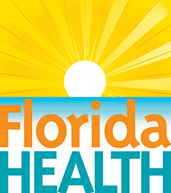It's a New Day in Public Health.
The Florida Department of Health works to protect, promote, and improve the health of all people in Florida through integrated state, county, and community efforts.
Florida OD2A-S Prevention Overview
Overdose Response
The Florida Overdose Data to Action in States (OD2A-S) prevention strategies use data collected through OD2A-S surveillance efforts to inform and enhance drug overdose prevention programs. By leveraging real-time data, these strategies aim to improve outcomes for individuals affected by substance use disorder (SUD) through targeted, evidence-based interventions.
The OD2A-S prevention initiatives encompass a comprehensive approach, ranging from harm reduction and linkage to care to public safety partnerships and clinician engagement. These strategies are designed to create more effective, sustainable, and long-term solutions for preventing overdoses and supporting individuals on the path to recovery.
There are four key prevention strategies under OD2A-S, each focused on addressing different aspects of the overdose crisis. Detailed information on these strategies is provided below.
OD2A-S Strategy 6 Overview
Strategy 6 of the OD2A-S program is the strategy focused on infrastructure improvements to the state Prescription Drug Monitoring Program (PDMP), known as E-FORCSE in the state of Florida, and educating clinicians regarding usage of the PDMP and guidelines for prescribing opioids to patients. Strategy 6 is broken down into two components, with each having specific interventions linked to them.
For more information detailed information, please visit the Florida E-FORSCE Page at: https://www.floridahealth.gov/statistics-and-data/e-forcse/index.html.
Strategy 6a: Clinical/Health System Engagement
Interventions:
- Developing trainings on the management of pain, focusing on dissemination to all clinicians who may treat acute subacute, and chronic pain in outpatient settings.
- Developing trainings on screening and diagnosis of substance use disorders (SUDs), especially opioid use disorder (OUD) and stimulant use disorder (StUD), intended for clinicians across a range of specialties.
- Supporting emergency department linkages via multidisciplinary teams including navigators, broadening the scope from only post-overdose scenarios to also include strategies like focused connections during care for conditions that may represent sequalae of substance use (e.g., soft/skin tissue infections) and enhanced universal screening for SUD (e.g., opioids and stimulants) among patients presenting for other reasons to identify new opportunities to engage in and link to care.
Strategy 6b: Health IT/PDMP Enhancement
Interventions:
- Implementing and expanding electronic information sharing among states in compliance with the National Prescription Monitoring Information Exchange (PMIX) Architecture.
- Connecting and maintaining bidirectional connection for the exchange of PDMP data with other “state” PDMP systems and ensuring that every request received by the recipient’s PDMP systems and ensuring that every request received by the recipient’s PDMP system sends and appropriate and timely response.
- Implementing universal PDMP registrations and use that includes a streamlined and simplified PDMP registration process.
- Improving PDMP infrastructure or information systems to support proactive reporting and data analysis including enhancing reporting systems to increase frequency and quality of reporting.
- Designing, validating, or refining algorithms for identifying high-risk prescribing activity and other risk factors associated with overdose to use as a trigger for proactive reports (e.g., receiving prescriptions from multiple clinicians, and concurrent substance use or dangerous combinations that put patients at higher risk for opioid use disorder and overdose).
- Integrating PDMP data into electronic health records.
OD2A Strategies 7-9 Overview
Strategies 7-9 of the OD2A-S program are the bulk of interventions focused on Harm Reduction & Linkage-to-Care. These strategies, and their related interventions, run the spectrum of harm reduction activities in state/local jails/prisons, to media campaigns to raise awareness of substance use disorder (SUD) to the placement of Linkage-to-Care Navigators in local hospitals/ED’s. These strategies are implemented at the local level by County Health Department’s (CHD’s), with supervision and support by the state office of FDOH. Strategies 7-9, and their related interventions, are broken down as follows:
Strategy 7: Public Safety Partnerships/Interventions
Interventions:
- Implementing strategies that may take place in criminal justice settings (e.g., courts, jail, parole), upon reentry, and in the community.
Strategy 8: Harm Reduction
Interventions:
- Developing and expanding overdose education and naloxone distribution programs that prioritize education and distribution among those who are at the greatest risk of experiencing or witnessing an overdose.
- Initiating, expanding, and supporting programs and outreach by navigators (e.g., people with lived experience, case mangers) to promote access to harm reduction services (such as syringe services programs [SSPs]) and to link people to care from harm reduction services as appropriate.
Strategy 9: Community-Based Linkage to Care
Interventions:
- Using navigators to facilitate linking people to care and other services.
- Using navigators to facilitate implementing monitoring programs following discharge from acute care to prevent treatment interruption.



Connect with DOH